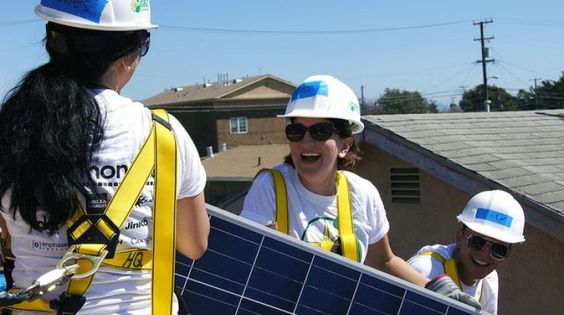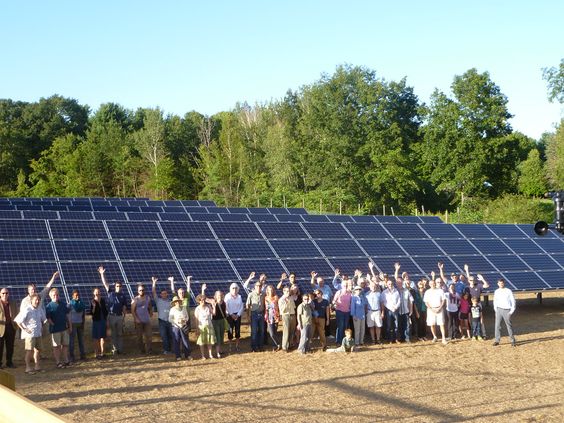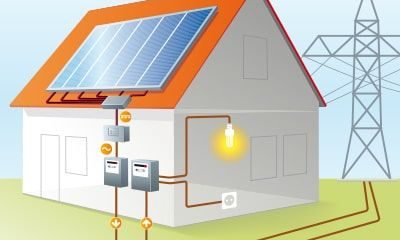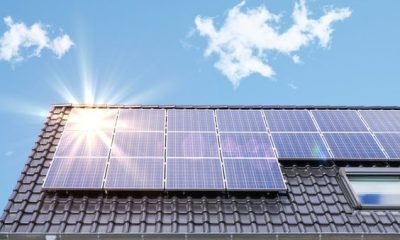Home Solar Energy
How to Join Community Solar Program

How to Join Community Solar Program
Introduction
Solar energy is a clean and renewable source of power that has become increasingly popular in recent years. While installing solar panels on your property is a great way to harness the sun’s energy, it’s not always feasible for everyone. That’s where community solar programs come into play. In this article, we’ll guide you on how to join a community solar program, allowing you to benefit from solar energy without the need for panels on your roof.
Understanding Community Solar
A. How Community Solar Works
Community solar, also known as solar gardens or shared solar, is a program that allows individuals, businesses, and organizations to access the benefits of solar energy without having to install and maintain solar panels on their property. Instead, participants subscribe to a share of a larger solar array located off-site. This array can be installed on a vacant lot, a commercial property, or a local solar farm.
By subscribing to a share of this solar array, you essentially own a portion of the system and receive a portion of the energy produced in the form of solar credits. These credits are then applied to your utility bill, reducing your energy costs. In essence, you’re using solar power without the physical solar panels on your property.
B. Eligibility Requirements
Eligibility for community solar programs can vary, but they are typically open to residential customers, businesses, and non-profit organizations. Specific eligibility criteria may include location, credit score, and utility provider, so it’s important to check with your local program for detailed information.
C. Different Types of Community Solar Models
There are various community solar models, so it’s crucial to understand the different options available:
1. On-site Programs: Some community solar projects are located on-site, where participants visit the solar farm or garden to see their share of the installation.
2. Off-site Programs: These are more common, where the solar arrays are located away from participants’ properties, often on larger, remote solar farms.
3. Ownership Models: In some cases, participants can directly own a portion of the solar panels, whereas in others, they subscribe to receive solar credits.
4. Subscription Models: Community solar programs may operate on a subscription-based model, meaning participants sign up for a specific number of solar credits based on their energy needs.
Now that you understand the basics of community solar, let’s move on to the steps you can follow to join a program.
Researching Community Solar Programs
A. Locating Programs in Your Area
The first step is to find community solar programs available in your region. You can do this by:
- Checking Online Resources: Use websites and databases that list community solar programs by location.
- Contacting Your Utility Provider: Reach out to your local utility company to inquire about any community solar initiatives they may offer.
- Consulting with Solar Developers: Some companies specialize in developing community solar projects and may have information on local programs.
B. Comparing Program Options
Not all community solar programs are created equal. Take the time to compare your options:
- Capacity and Availability: Check if there are open spots in the program and the capacity of the solar array.
- Subscription Costs: Review the cost of subscribing to a share and compare it to your current electricity bill.
- Contract Terms: Understand the length of the contract and any potential exit fees.
C. Understanding Subscription Models
Different programs may offer varying subscription models. Some charge upfront fees, while others operate on a month-to-month basis. Be sure to choose a model that suits your budget and energy needs.
By researching and understanding these aspects, you can make an informed decision about the community solar program that best fits your circumstances. In the next section, we will explore the steps to join one of these programs.
How to Join Community Solar Program
Joining a Community Solar Program
A. Signing Up for a Program
Once you’ve identified a community solar program that aligns with your needs and preferences, the next step is to sign up. This typically involves the following steps:
1. Contact the Program: Reach out to the program coordinator or provider. This can usually be done through their website or by phone. They will guide you through the enrollment process.
2. Enrollment Forms: You’ll be required to fill out enrollment forms with your personal information and energy usage details.
3. Review Terms: Carefully review the terms of the program, including subscription costs, contract duration, and any obligations you have as a participant.
4. Agreement and Payment: Sign the program agreement and make any necessary initial payments, which may include subscription fees or a refundable deposit.
B. Cost and Financing Options
Understanding the financial aspect of joining a community solar program is crucial. Here are some important financial considerations:
1. Subscription Costs: Determine the subscription fee you’ll need to pay. This fee may vary based on the size of the share you wish to subscribe to.
2. Savings and Credits: Calculate the potential savings and energy credits you’ll receive as a result of your subscription. This is where you’ll see the economic benefits.
3. Financing Options: Some programs offer financing options or incentives that can make it more affordable to participate.
C. Commitment and Duration
Community solar programs often come with a specific contract duration, which can vary from a few years to a decade or more. Before signing up, consider the following:
1. Contract Length: Understand the duration of your commitment. Some programs may allow flexibility in terms of contract length.
2. Exit Strategy: Know what options you have if you need to exit the program before the contract ends. This could involve transferring your share or selling it to another eligible participant.
3. Renewal and Termination: Familiarize yourself with the renewal process and the conditions under which the program can be terminated.
By following these steps and being well-informed about the financial aspects, you can successfully join a community solar program and start benefiting from solar energy without the need for solar panels on your property.
Participating in a Community Solar Program
After joining, it’s important to understand how to actively participate in the program. In this section, we’ll cover the following aspects:
A. Receiving Solar Credits
Once you’re a member of the community solar program, you’ll start receiving solar credits on your utility bill. These credits represent the energy generated by your share of the solar array. You should monitor your utility statements to ensure the credits are being applied correctly.
B. Managing Your Share
Consider the following when managing your share in a community solar program:
1. Energy Usage: Be mindful of your energy consumption and how it aligns with your subscription. Adjust your usage if necessary to maximize your savings.
2. Maintenance and Updates: Stay informed about any maintenance or upgrades to the solar array to ensure its optimal performance.
C. Environmental and Economic Impact
Participating in a community solar program not only reduces your electricity costs but also contributes to a more sustainable future. Be aware of the environmental benefits and the positive impact you’re making by using clean, renewable energy.
In conclusion, joining a community solar program is a practical and eco-friendly way to harness solar energy without the need for solar panels. By understanding how community solar works, researching available programs, and following the steps to join, you can take advantage of the benefits of solar power while supporting a greener, more sustainable future.
Troubleshooting and FAQs
While community solar programs offer numerous benefits, there can be challenges and questions that arise during your participation. In this section, we’ll address common issues and provide answers to frequently asked questions:
A. Common Issues and Solutions
1. Billing Discrepancies: If you notice errors in your solar credits or billing, contact the program coordinator to resolve the issue promptly.
2. Change of Address: If you move to a new location within the same utility service area, inquire about transferring your subscription to your new address.
3. Early Termination: If you need to exit the program before the contract ends, discuss your options with the program provider. You might be able to transfer your share to another eligible participant.
B. FAQ Section
1. What are the environmental benefits of community solar?
- Community solar reduces greenhouse gas emissions, decreases reliance on fossil fuels, and supports the growth of renewable energy.
2. Do I need to own a home to participate in a community solar program?
- No, community solar is open to renters, homeowners, and businesses, making it an inclusive option for a wide range of individuals.
3. Can I take my solar credits with me if I move to a different area?
- This depends on the program and your utility provider. Some allow you to transfer your credits within their service area, while others may not.
4. What happens if the solar array needs repairs or maintenance?
- The program provider is responsible for maintenance and repairs to ensure the solar array operates effectively.
5. How do I know I’m getting the promised solar credits on my utility bill?
- Regularly review your utility bills to ensure that the solar credits are being applied as agreed upon in your program contract.
By understanding potential challenges and having answers to common questions, you can navigate your community solar program more effectively and make the most of your solar subscription.
Conclusion
Community solar programs offer a practical and accessible way for individuals, businesses, and organizations to benefit from solar energy. By following the steps outlined in this guide, you can successfully join a community solar program, reduce your energy costs, and contribute to a more sustainable and environmentally friendly future.
Not only do these programs make solar energy accessible to a broader audience, but they also promote clean energy generation and reduce the carbon footprint of the community. So, take the first step toward a greener future by exploring community solar programs in your area and making the switch to renewable energy today.


















